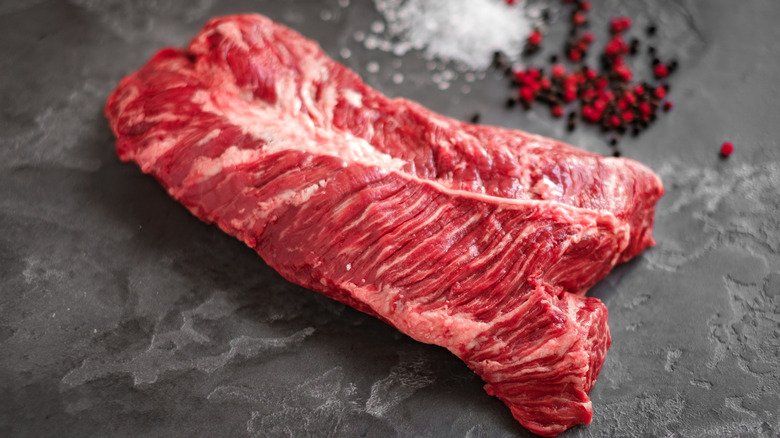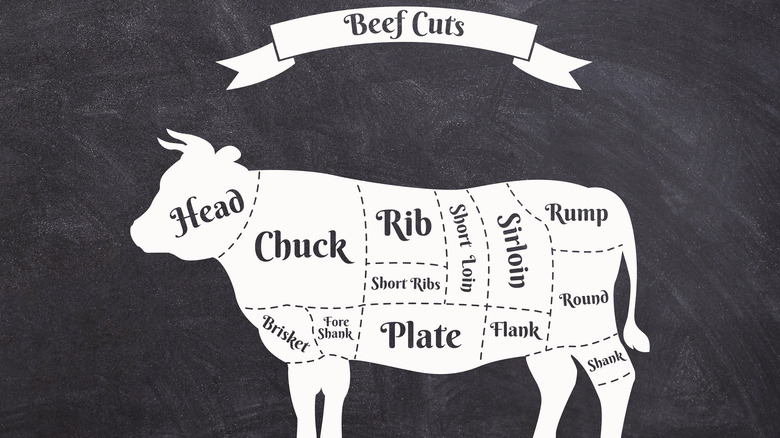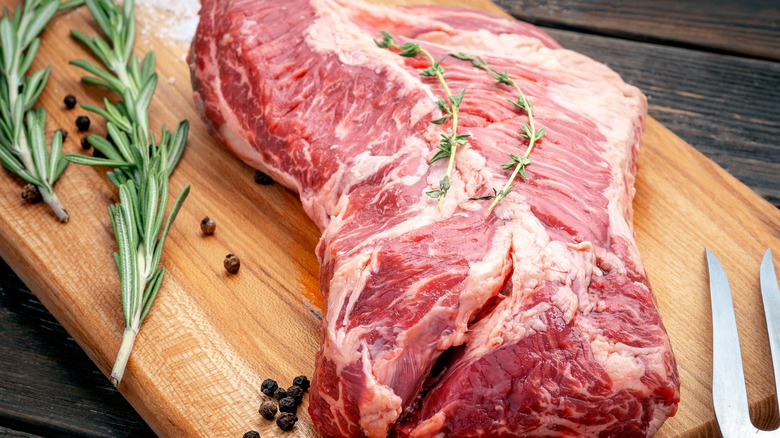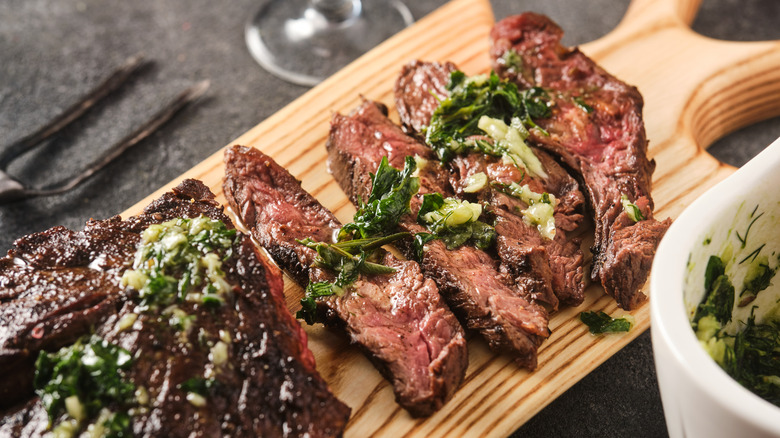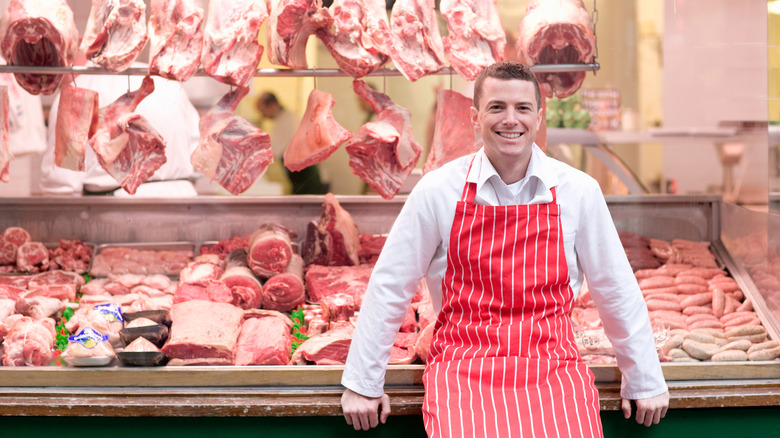Everything You Need To Know About Hanger Steak
For those who want the joys of steak but lack the budget for cuts like filet mignon and ribeye, there is, as Rachel Ray suggests in a list of five cheap steaks, hanger steak. While noting that hangar steak has indeed grown in popularity, it has remained affordable enough for people to cook with oven fries and have with a bottle of wine.
In France, where it's known as onglet, hanger steak is a prized cut served as a steak in its own right. Until more recently, however, in the U.S. you were more likely to find hanger steak as part of a stew (The Independent). That said, butchers in the United States understood the value of the meat, often saving it for themselves. That's why hanger steak is also known as butcher's steak.
Why has hanger steak not enjoyed the same reputation in the U.S. as in France? It comes down to looks and location.
What makes hanger steak so tender
Writing for The New York Times in 2000, the late chef and TV host Anthony Bourdain noted how French chefs "use everything" when it comes to food, particularly meat. "Use what's available. Use it to its best effect. And make the most money you can from it — every scrap of shank, shoulder and jowl," he wrote.
Bourdain described how the steak exists as a single strip between the kidneys, making it a plate cut like skirt steak. Without fat or bone to protect it, the steak lacks the coloring of a T-bone, Bourdain writes, but "because of its exposed location, it comes in contact with the air and begins aging almost immediately after the animal is slaughtered, and so it is more flavorful."
Hanger steak is also, as The Spruce Eats notes, the most tender cut of meat on the cow because, unlike other parts of the cow, it does nothing but hang (hence, the name hanger steak), meaning its muscles don't develop and toughen. However, as the area covered by this particular cut is so specific, each cow only produces one hanger steak of about two pounds.
Hanger steak vs. other plate cuts
A hanger steak is just one of the strips of meat available within the plate cut area. Even My Chicago Steak, the steak company that fashions its blog as a steak university, fails to really distinguish hanger, flank, and skirt steaks — beyond comparative levels of tenderness.
Flank steaks, which are located around the belly, are lean and skirt steaks, which come from between the abdomen and chest, are less tender because the muscles are used more. Both of these find their full potential with preparation, marinating with the former and tenderizing with the latter. That said, they wouldn't recommend eating skirt steak as its own thing, but as a steak ingredient for a different dish.
Hanger steak, though, is protected by the rib cage and, as mentioned, is an incredibly tender meat, meaning no further preparation is needed to enjoy it as the featured food of a meal. That said, in a pinch, you could substitute any of them for the others as long as you address the qualities of each steak.
How to cook hanger steak
Hanger steak cooks fairly easily, though as My Chicago Steak explains, it can be easy to turn this cut of meat from tender to tough if cooked too long to the point of being even slightly overdone.
Epicurious goes against everything suggested so far, stating that the best way to cook a hanger steak is to marinate it as its looseness will soak up the flavor. Food & Wine prefers liberal seasoning. The difference between these two strains may be due more to a purist's love of meat flavor versus Americans' love of slathering flavor onto meat.
However you prepare it, though, the actual cooking of hanger steak follows the recipes of thin cuts, which have you cook until the steak reaches the point you desire, then let it rest.
Where to buy hanger steak
After all this, you might find yourself hankering for a hanger steak. Writing for My Recipes, Elizabeth Laseter experienced such a desire, but found that the only way to acquire a hanger steak was to go to a butcher. No supermarkets offered it. The issue is, as this piece touched upon earlier, that there is only one hanger steak per cow. That is a lower amount than even the much desired filet mignon. This makes it a rare item that has only been treated as cheap due to how unknown is was, which in turn was due to the fact that supermarkets did not consider it sustainable to stock. As no one knew to buy it, butchers offered hanger steak for a cheap price, as they probably would not have sold it otherwise.
But hanger steak's newfound popularity brings with it another problem: Supply. Even in 2017, Huff Post published a piece in which a butcher pleaded with readers not to hop on the hanger steak bandwagon. This was not because of some anti-popularity bias, but because one cow produced just one hanger steak. It's not a sustainable food. Hanger steak, the steak originally found from French sustainability, cannot sustain excessive popularity.
